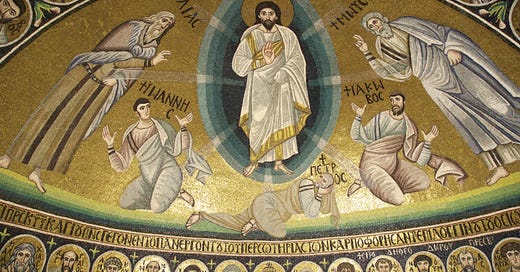One nature or two? The Christological Storm Before Iconoclasm

As we discussed earlier, in “When the World Changed: Sacred Art and the coming of Islam,” the 7th century was to be a period of cataclysmic change for the Christian world of the Mediterranean and newly Christianised northwestern Europe.
From the time of the emancipation of Christianity by Constantine the Great, the Church had been riven with arguments and splits over the most fundamental questions of all: the nature of Christ and His relationship with the Godhead on one side and humanity on the other. These were not abstract philosophical debates but visceral, often violent disputes over what it meant to proclaim Jesus as both fully divine and fully human. Councils were convened, creeds written, bishops deposed or exiled and communities divided. Each new formulation attempted to strike a balance between safeguarding divine transcendence and affirming the Incarnation in its fulness. Yet no resolution ever seemed to silence the controversy entirely.
By the middle of the fifth century, the Council of Chalcedon (451) established a final formula: Jesus Christ is one person in two natures, divine and human, without confusion, change, division, or separation. This was meant as a definitive settlement, but it satisfied few beyond the imperial core. Egypt, Syria, Armenia and other regions refused to adhere to the formulas.
The imperial Church, having aligned itself with Chalcedon, now faced not only theological dissent but a widening cultural and political rift between Constantinople and the eastern provinces that emperors would try to heal with new doctrinal compromises, setting the stage for the much larger controversies of the 7th and 8th centuries.
In today’s post for paid subscribers, we’ll look at how these theological debates, especially the imperial push for Monothelitism, shaped not only doctrine but sacred art. The Council of Chalcedon in the middle of the fifth century had defined Christ as one person in two natures, divine and human, but the controversy didn’t end there. Emperors like Heraclius tried to impose unity through a new formula, claiming Christ had only one will. At the same time, icons and mosaics began to reflect the Church’s deepening concern with how to depict the mystery of Christ’s full divinity and full humanity. This concern would finally culminate in the declarations of the Seventh Ecumenical Council (Second Council of Nicaea)… but even this wouldn’t end the argument.
I hope you’ll join us by subscribing below.






